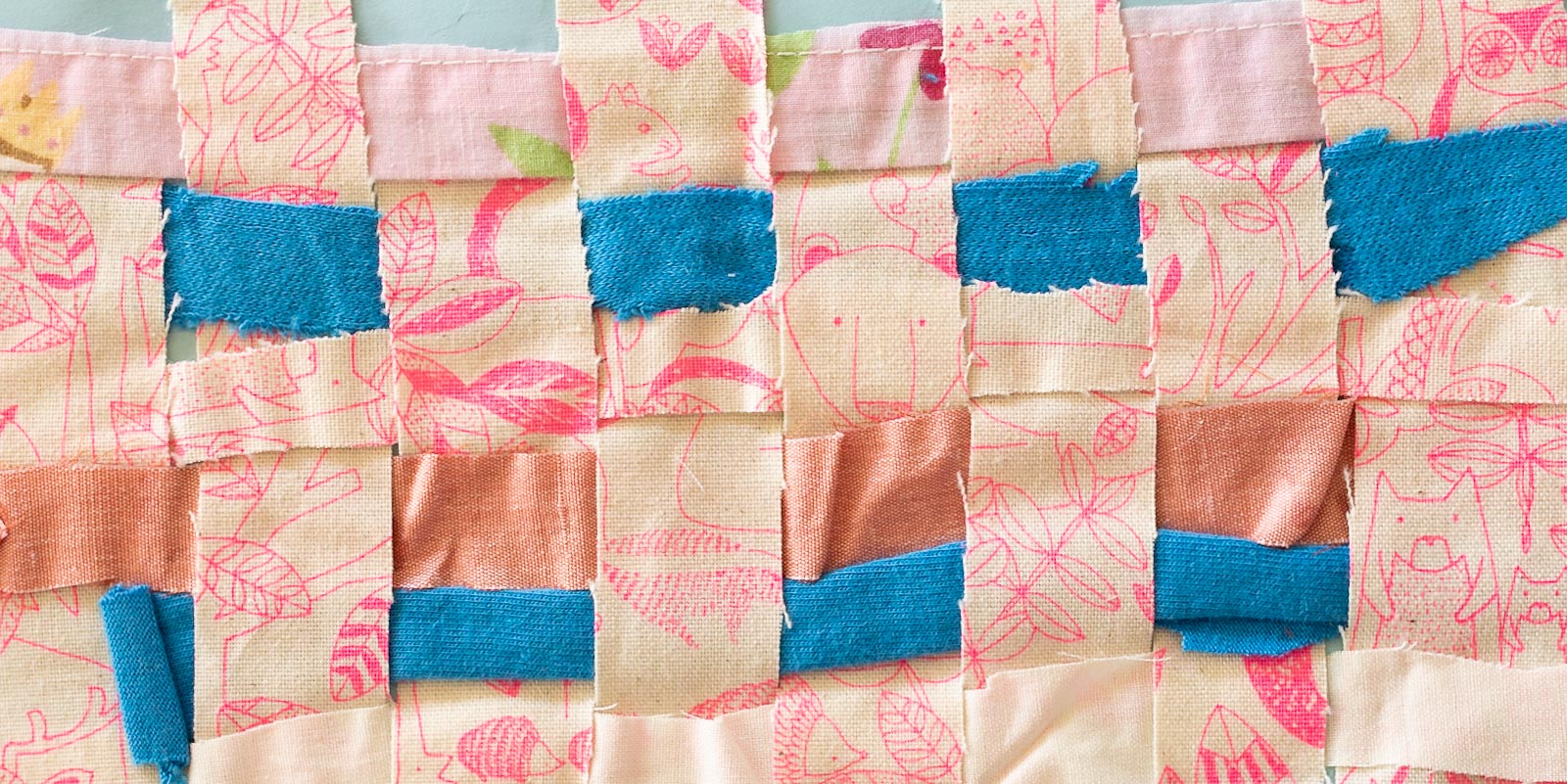
Fibre and textiles provide children of all ages with a rich, tactile experience. They make wonderful visual arts materials and loose parts.
Children love exploring boxes of fabrics and ribbons, examining each piece carefully and searching for the shiniest, most vibrant colours.
Introducing children to fibres can be a mind-opening experience. They can start to understand what common products, like clothes and curtains, are made from.
What is fibre and textiles?
Fibre is a natural material or processed material that is long, thin and flexible:
- Plant fibres include cotton, jute and coconut fibre.
- Animal fibres include wool, silk and horse hair.
- Processed fibres include nylon and polyester.
Fibre can be turned into thread or yarn by spinning, which is a beautiful process for children to see. Thread can be then woven into fabric, and yarn can be used for processes like knitting or crocheting.
Textiles is a general term for fibre, thread, yarn, fabric and products made by weaving, felting or knitting.
EYLF learning outcomes
Textiles is linked to The Early Years Learning Framework as it is a material (4.4).
Textiles can facilitate children's curiosity, imagination, creativity (4.1), problem solving, experimentation, hypothesising, researching and investigating (4.2).
Natural fibres help children become socially responsible and show respect for the environment (2.4).
Learning experiences
Explore various materials
Encourage children to manipulate a wide range of fibres and fabrics. Discuss their colours, patterns, and textures. Which ones are easy to fold and stretch? Which ones soak up water easily?
Model descriptive language during children's play:
Absorbent, breathable, colourful, comfy, decorated, durable, elastic, fluffy, frayed, heavy, lightweight, natural, patterned, printed, rough, sheer, shiny, smooth, soft, stiff, strong, textured, thick, thin, transparent, water-resistant, waterproof, woven.
Weave fibres
Tammy Knat is an Australian weaving artist. Her designs are rich with vibrant colours and intricate textures. Show your children Tammy's artworks to use as inspiration for their own weaving projects.
- Show toddlers how to thread yarn or ribbon through their fingers.
- Punch holes in a pattern on a paper plate. Use thread or ribbon to weave through the holes.
- Weave fibres through the holes in an old tennis racket.
- Make a large cardboard loom for a group weaving activity. Read DIY Cardboard Weaving Loom by Cedar Dell Forest Farm for instructions and great photos.
- Use flowers with long stems, feathers, and long pieces of grass in your weaving projects.
Dye fabric
Conduct an experiment. Test different forms of commercial or homemade dyes on different types of fabric. Which ones work best? Which ones stay bright or dark after the fabric has been laundered?
Make your own dyes by simmering crushed fruits and vegetables in water, and then straining the mixture. Try berries, beetroot, brown onions and purple cabbage.
Also, use cups of tea and coffee, tomato sauce, canned beetroot, red wine vinegar, and avocado.
Paint or make prints
Use fabric as a canvas to paint on. Invite children to talk about the difference between painting on paper and fabric.
Children also use printmaking techniques to make patterns on sheets of fabric.
Learn to sew
While sewing machines can obviously be dangerous for young children, they are incredibly interesting to them. Ask an educator who has one at home to bring it in and present a quick demonstration. Older children may be able to have a turn, at the discretion of their educators.
Also, look for opportunities where children can watch wool spinning or weaving in action.
There are many hands-on, age-appropriate sewing activities that develop fine-motor skills in young children:
- Use large plastic needles with big eyes and thick thread to sew basic stitches (e.g. running stitch or whipstitch). Try sewing pieces of felt together.
- Sew buttons onto a piece of cardboard.
- Use ribbon to lace through holes punched in cardboard.
- Learn finger knitting.
- Use safety pins to join pieces of fabric.
Create textile self portraits
Watch a video about the embroidered sculptures by the Yarrenyty Arltere Artists, from the Northern Territory: Every face has a story, every story has a face: Kulila! Children of all ages can make their own self portraits using various textiles. Read about responding to Kulila on AGSA.
Wrap sticks with coloured wool
Try a simple craft project by wrapping small sticks with coloured wool. Educators will need to help children attach the wool to one end of the stick (a hot glue gun is perfect, if you have one), and fasten the wool again when they have finished.
Children can wrap the wool around the stick themselves, in any way they like.
Learn about fashion design
Talk to children about the use of fabric in fashion, including discussing the meaning and importance of sustainability in fashion. Write a list of ways that old clothing can be reused or upcycled into a new product.
Provide children with magazines and catalogues so they can browse clothing and observe the fabrics.
Ask children about the types of clothing and fabric they prefer to wear, acknowledging that everyone has different preferences.
Events
7th October is World Cotton Day
Resources
Picture books
Extra Yarn by Mac Barnett
Websites
Curious Kids: How is fabric made?
